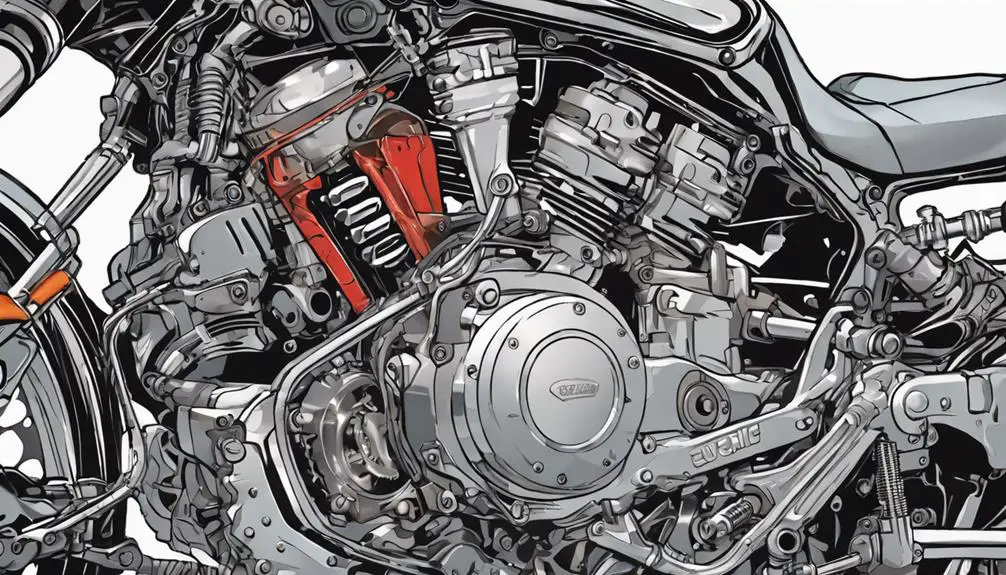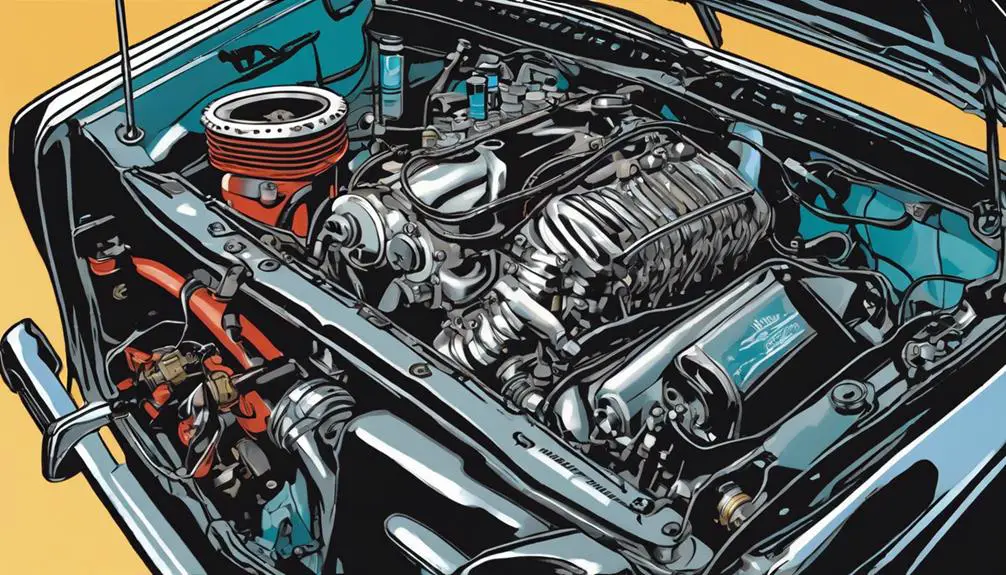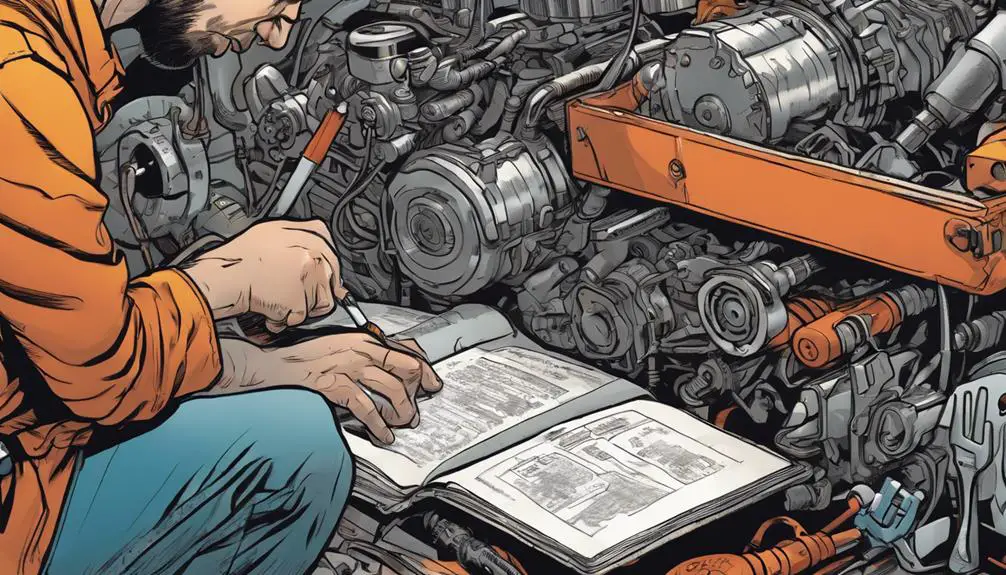When it comes to Ducati engines, you might appreciate their performance, but even the best machines can face reliability issues. You'll want to understand the common problems that can arise, from oil leaks to coolant levels, and how regular maintenance can make a significant difference. By keeping tabs on fuel injection systems and performance specifications, you can enhance your riding experience. But what are the key insights that can help you avoid these pitfalls? Let's explore the top five insights that every Ducati owner should know.
Key Takeaways
- Ducati engines blend high performance with reliability, thanks to quality materials and innovative design.
- Regular maintenance, such as oil changes and air filter replacements, is vital for optimal engine health.
- Common issues include oil leaks, irregular fueling, overheating, and cam belt wear, requiring prompt attention.
- User experiences vary; many praise engine longevity, while others report costly repairs and breakdowns.
Overview of Ducati Engine Reliability

Ducati engines are known for their impressive performance, but many riders wonder about their reliability in the long run. You crave the thrill of the open road, and a dependable engine is vital to that freedom.
Ducati's engineering blends high performance with innovative design, offering a unique riding experience that captivates enthusiasts. While their engines deliver power and responsiveness, it's important to understand their reliability.
When you choose a Ducati, you're investing in a legacy of craftsmanship. These engines are built with quality materials and cutting-edge technology, which often results in long-lasting performance. Regular maintenance is significant, though. By staying on top of your bike's needs, you can access its full potential and enjoy the exhilarating ride it offers.
Riders often report satisfaction with their Ducati's engine reliability, especially when you treat your machine with care. You'll find that a proactive approach to maintenance helps you experience fewer issues and more freedom on your journeys.
Ultimately, when you embrace the spirit of Ducati, you're not just riding; you're joining a community that values both performance and the passion for the ride. Your Ducati can be a trusted companion, provided you nurture it.
Common Engine Issues in Ducati
While many riders enjoy the thrill of Ducati's performance, some may encounter common engine issues that can impact their experience on the road.
One of the most cited problems is the presence of oil leaks, which can stem from faulty gaskets or seals. You might notice oil pooling beneath your bike, signaling a need for immediate attention.
Another issue is the irregular fueling, often linked to the fuel injection system. If your bike hesitates or stalls unexpectedly, it could be a sign of clogged injectors or a malfunctioning fuel pump.
Overheating can also plague some Ducati models, particularly if the cooling system isn't well-maintained. You'll want to keep an eye on coolant levels to avoid more serious damage.
Lastly, you may face problems with the cam belt, which can wear out over time. A snapped belt can lead to catastrophic engine failure, so regular checks are essential.
Maintenance Tips for Longevity

To keep your engine running smoothly for years to come, regular maintenance is essential.
Start by checking your oil levels frequently. Fresh oil lubricates engine parts, preventing wear and tear. Don't wait for that warning light; change the oil every 3,000 to 5,000 miles, or as recommended by your manufacturer.
Next, pay attention to your air filter. A clean air filter guarantees that your engine breathes well, promoting efficiency. Replace it every 12,000 to 15,000 miles.
Also, inspect your spark plugs regularly. Worn-out plugs can cause misfires and reduce performance. Aim to replace them every 30,000 miles or whenever you notice a drop in power.
Another key aspect is your coolant system. Regularly check coolant levels and replace it as needed to prevent overheating.
Lastly, don't overlook your fuel system. Use high-quality fuels and consider adding a fuel injector cleaner periodically to keep everything flowing smoothly.
Performance Specifications to Consider
Understanding performance specifications is key to maximizing your engine's capabilities and ensuring it meets your driving needs. When you're on the road, feeling the freedom of the open highway, you want an engine that responds effortlessly.
Here are four critical performance specifications to evaluate:
- Horsepower: This determines how fast you can go. More horsepower means more thrilling acceleration, allowing you to conquer any road.
- Torque: Measured in pound-feet, torque affects your engine's ability to move your vehicle, especially when carrying heavy loads or climbing steep hills. You want that power at your fingertips.
- RPM Range: The revolutions per minute give you an idea of how efficiently your engine operates at different speeds. A wider range offers flexibility, letting you release the beast when needed.
- Fuel Efficiency: Balancing power with efficiency means you can enjoy your drives without constantly worrying about gas prices. An engine that sips fuel frees you from frequent stops.
User Experiences and Reviews

Many drivers share their experiences to highlight how engine reliability impacts their daily journeys and adventures. You might feel the thrill of hitting the open road, but nothing dampens that freedom like an engine failure. Many users rave about their vehicles, praising those that consistently deliver smooth performance and longevity. They express how dependable engines allow them to explore without worry, whether it's a weekend getaway or a long commute.
On the flip side, you'll find reviews filled with frustration from those who've faced engine troubles. Some report costly repairs that cut into their budgets, while others describe the stress of being stranded unexpectedly. You want to know which brands and models stand the test of time, helping you break free from the chains of engine anxiety.
Many drivers suggest researching user reviews before making a purchase. You can learn from their insights, avoiding models with frequent issues. Ultimately, these shared experiences can empower you to choose a reliable engine, ensuring your adventures remain spontaneous and exhilarating.
Embrace the freedom of the road, knowing that a trustworthy engine can elevate your driving experience.
Frequently Asked Questions
How Do Ducati Engines Compare to Competitors in Reliability?
When you compare Ducati engines to competitors, you'll notice they often have a reputation for being less reliable.
While they deliver thrilling performance and unique design, some riders face issues with maintenance and durability.
Other brands might offer more dependable options, especially for long-distance touring.
If you're seeking freedom on the road, consider how much you value reliability versus the exhilarating experience a Ducati can provide.
It's all about what matters most to you.
What Warranty Options Are Available for Ducati Engines?
Imagine you just bought a Ducati and want peace of mind. You'll find warranty options that typically include a two-year unlimited mileage warranty. This covers defects and gives you confidence in your ride.
Some dealers even offer extended warranties, allowing you to enjoy your freedom on the road longer.
Plus, Ducati's service plans can help keep your bike in top shape, ensuring you're ready for any adventure that comes your way.
Are There Specific Models Known for Exceptional Reliability?
When you're searching for models known for exceptional reliability, you'll find that certain brands stand out.
For instance, many riders praise the Honda CB series and Yamaha MT line for their durability and low maintenance needs.
These bikes often handle the rigors of daily riding without issue, giving you the freedom to explore without constant worry.
How Can I Tell if My Ducati Engine Needs Repairs?
Does your Ducati feel different when you ride it? You might notice unusual noises, decreased performance, or oil leaks.
Pay attention to vibrations that weren't there before or warning lights on your dashboard. If your engine struggles to start or runs rough, it's time to dig deeper.
Don't ignore these signs; they could signal the need for repairs. Trust your instincts and act before a small issue becomes a major headache.
What Aftermarket Parts Improve Ducati Engine Reliability?
When you're looking to enhance your Ducati's engine reliability, consider investing in aftermarket parts like high-quality oil filters, upgraded fuel injectors, and performance exhaust systems.
These components can help improve airflow and fuel efficiency, reducing strain on the engine.
Additionally, a good ECU remap can optimize performance and longevity.
Conclusion
In the world of Ducati engines, think of your bike as a high-performance sports car: it thrives on regular care and attention.
Just like a race car driver knows that routine checks can prevent engine failures, you too can guarantee longevity and reliability by staying on top of maintenance.
Remember, a well-tuned engine not only delivers power but also elevates your riding experience.
With the right insights and care, your Ducati can be a trusted companion for many thrilling rides ahead.